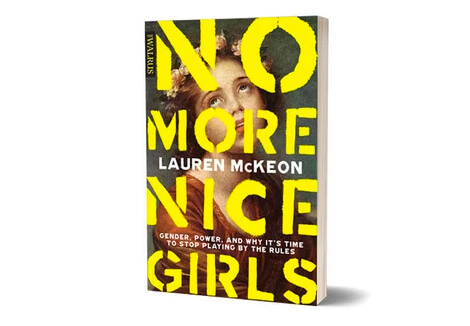One evening a few months ago, I lit a joint of Granddaddy Purple. I had arrived home late—again—from work, anxiety knotting in my chest. There was still so much to do, and I couldn’t seem to start on any of it. I needed to hustle, but first, I needed to relax. Introduced in 2003, Granddaddy Purple is now one of the most popular cannabis strains, largely for its ability to quickly calm users. Mine came prerolled, in recycled packaging printed with soy-based ink, from a Canadian company called 48North; according to the company’s website, the strain is “best loved for evenings spent dreaming (without being asleep, that is).” Each strain 48North produces has a suggested situational pairing: tackling your to-do list, giggling with your best friend, enjoying your favourite meal. I just wanted something to make me feel better.
Listen to an audio version of this story
For more audio from The Walrus, subscribe to AMI-audio podcasts on iTunes.
And it did. As I settled into the high, the tension melted away. I had what 48North might describe as the ideal cannabis experience: overwhelmed and overstressed, I used my weed as a supercharged piece of self-care. Like many modern cannabis brands, 48North appears to care less about getting customers stoned and more about aligning itself with the massively lucrative wellness industry. Valued at $4.2 trillion (US) by the Global Wellness Institute, the market encompasses everything from clean-eating methods and meditation classes to natural skin creams and immunity-boosting teas. It has also dialled into a very specific consumer: health-conscious women with disposable income and an affinity for aesthetically pleasing, eco-friendly products. Maybe you’ve seen this woman on social media. She wears a sports bra made from recycled bottles, pops vitamin gummies for her glossy hair, and eats from smoothie bowls lovingly arranged on marble countertops. She works out regularly, takes languorous scented baths, enjoys giant glasses of neon celery juice. She’s more social-media spectre than flesh and blood: she is a #Mood. She’s the consumer virtually every wellness brand wants—and the one they want the rest of us to become.
48North’s Alison Gordon, one of the cannabis industry’s few female CEOs, wants her too. Pot has long been associated with men: women, she believes, are a woefully underserved (and lucrative) demographic. 48North isn’t alone in thinking so. Throughout nearly a year of reporting, I found dozens of cannabis companies in Canada and the US overhauling the stoner aesthetic into a high-end lifestyle that seems cribbed straight from mainstream women’s brands like Gwyneth Paltrow’s Goop. 48North’s identity, for example, is built on being good: good for you and good for the world. The company grows its organic cannabis outdoors, under the sun, on 40.5 hectares appropriately called the Good Farm. Then there’s Blissco, which bills itself as “the Canadian wellness brand” and whose website features a recipe for a cannabis-infused turmeric “golden canna latte” from a holistic nutritionist. Van der Pop, another brand, promises to help women explore weed “in a way that is nuanced and respects stigma free living.” Its strains have names like Cloudburst and Eclipse. Alberta-based Sundial, meanwhile, reminds customers that weed is “a way for women to take wellness into their own hands, and shake some of the obstacles that can hold them back from living their best lives.” Sundial divides its cannabis into therapeutic categories, such as “flow,” “ease,” “calm,” and “lift.”
Taken together, the weed rebrand is a masterclass in marketing—the transformation of a once illegal substance into a miracle remedy for the pressure, drudgery, and general messed-up-ness of modern life. This female-friendly makeover, as Chatelaine intuited back in 2016, in an article about what it called “the pinking of pot,” could also prove an effective way of “normalizing cannabis within the broader culture.” It’s not a bad bet for companies’ bottom lines either. In the first quarter of 2019, Canadians spent $377 million on legal cannabis, up 119 percent from the previous quarter. With the second wave of legalization, in October 2019, allowing for more methods of cannabis consumption, the market, according to the cannabis media company Lift & Co, is expected to gain as many as 3 million new consumers interested in edibles, extracts, and topical creams. Many of them will likely be drawn to cannabis for its health benefits rather than its high. Or, as one woman put it to me: “I went from seeing cannabis as this sort of sacramental mushroom-type thing to, like, kale.”
Wellness advertising has primed women to respond favourably to such claims, in turn allowing many cannabis vendors to set up shop with bold promises. Namely, that cannabis is an answer to our relentless search for the right combination of products and practices to achieve balance and happiness. But a woman’s own life is, ultimately, what sweetens the sales pitch. The American Psychological Association has consistently found that women feel more stressed than men do, and a 2016 study found we’re twice as likely to suffer from anxiety. We’re also more likely to say our stress is rising and to feel anxiety and psychological distress at work—all disparities that have contributed to the term “stress gap.”
No wonder we’re waiting for someone to sell us something that will help. If the old battle for cannabis was legalization, the new fight, post-legalization, is to make it both magical and mundane—a cure-all, but no more remarkable than oat milk, activated-charcoal water, or high-waist compression leggings.
I am, in many ways, the ideal customer for the new cannabis market. Before legalization, I’d barely tried pot, let alone purchased my own joints. But I care a lot about wellness—or, at least, about the idea of it in my life. I regularly eat hemp and chia, sprinkling the seeds on everything from salads to (sugar-free, paleo) pancakes. I drink hot lemon water mixed with collagen to improve my skin. I occasionally remember to take probiotics. I unreservedly love smoothie bowls and further love that, when I splurge on them, my breakfast looks cute. I do not eat red meat. I shop at Whole Foods. I go to the gym regularly, and I take sweaty selfies while I’m there. I’ve consulted my tarot deck about important life decisions. I have one evil-eye tattoo and two essential-oil diffusers. I continue to buy plants even though I can’t keep them alive because I’m too busy to water them. Once, I went to a week-long silent yoga retreat, and I still meditate sometimes, clutching the rounded crystal the instructor gave me to better centre my energy.
What I’m saying is: even as an avowed feminist and skeptical professional in my thirties, I’m not above it all. If something promises to reduce my stress or improve my mood, and if it doesn’t look harmful or totally bogus, chances are I’ll buy it. Like many people, I am completely frazzled and completely reluctant to make any changes to my deadline-harassed, twelve-hour workdays. I am anxious about all the things I’m doing, all the things I want to do, and all the things I’m not doing. But I balk at slowing down. I don’t want to curb my ambition. The extent to which this affects my health is not insubstantial. Last year, I was diagnosed with a rare dental disease that threatened to winnow my gums down to nothing—a condition First World War soldiers in the trenches often suffered from. Few things are more surreal than reassessing your work-life balance after a lecture from your dentist.
The reasonable thing would have been to do less. Instead, I wondered if I could keep doing the same number of things but also force my brain to take the occasional break—sort of like a neural pause button. My therapist suggested cannabidiol, or CBD, a supposedly nonintoxicating compound derived from the cannabis plant and purported to treat everything from acne, insomnia, and depression to epilepsy, diabetes, and cancer. (I’ve even seen CBD advertised to address anxiety in cats and dogs.) Meanwhile, my partner recommended cannabis’s tetrahydrocannabinol, or THC, the active ingredient responsible for giving you a high. Overall, I found the idea of cannabis alluring but also slightly alarming. I was both curious and unsure. I was also hazy on how to use it and even hazier on whether it was a step toward genuine wellness or, like many wellness products, a surface fix masquerading as something more. I wanted a shortcut to better health and hoped it would work.
Eventually, I tried some of my partner’s weed. After months of bumming a joint now and then, I finally decided to visit the online Ontario Cannabis Store to supply myself. I ended up buying a lot, slipping into a sort of shopping mindlessness in which everything has the potential to drastically improve one’s life—a therapeutic experience in itself. In the end, I purchased 3.5 grams each of Sundial’s Lemon Riot and Citrus Punch for a total cost of $81.90. The latter strain was said to have “the smell and taste of fresh Florida oranges.” (Mostly, it smelled like weed.) I bought one gram of Sundial’s Zen Berry ($12.30), which fell under the “calm” series, advertised with: “Hit pause. Unwind. It’s time to focus on you.” And I also bought a $68 pipe made from crystal quartz to better connect with my “natural energy and transcendent vibes.” (In a wellness-ruining moment, it arrived shattered.)

The rest of my haul included one $6 Solie Sense preroll (slogan: “find your moment”); a $16 six-pack of marble-patterned prerolled cones, from Accoutrements, made from palm pulp and edible hempseed ink (the women-fronted brand also sells a $725 fourteen-karat-gold-plated joint holder “to blend the space between cannabis and home décor”); my aforementioned $17.05 pack of 48North Granddaddy Purple prerolled joints; and an $8 bottle of something called Cloud Mist, a biodegradable spray meant to cover the smell of cannabis smoke. The scent, developed in partnership with Toronto perfumer Brennan Michael, has “notes of lavender, sandalwood, and lilac.” It smelled expensive.
The federal government has strict rules when it comes to advertising cannabis. Much like alcohol manufacturers, which aren’t allowed to make claims about the effects of their products, cannabis manufacturers can state THC and CBD percentages but are limited in depicting how stoned—or not—a product will make someone. These restrictions have frustrated brands unsure how far they can go in educating inexperienced consumers. A person who wants to try the latest smoothie trend isn’t worried about whether they’ll be able to drive to work later or carry on a conversation. Someone who has never smoked weed before, or who hasn’t toked in years, wants to know what cannabis will do for them but also to them. “There’s a lot of anxiety around purchasing cannabis products when you haven’t tried them before,” says Preety Keith, brand manager at Irisa, yet another cannabis company that focuses on women.
Wellness has been a godsend to cannabis brands, giving them a ready-made, promise-filled language to talk about weed without actually talking about it at all. Hence the intense focus on experiential analogies: this strain will make you feel like you’re in a warm, candlelit bath, that strain will make you feel like you’re cozily sipping coffee on a wood patio in the Algonquin. Irisa recently went even further, testing an in-store virtual-reality demo. Each VR world is meant to evoke a person’s idealized experience with the corresponding cannabis product. Customers curious about a CBD oil’s “serene and calming” effect can don VR goggles and find themselves in the middle of the ocean, watching a sunset, birds flying on the horizon. Those with questions about another CBD oil infused with THC are transported to a club: strobe lights, a disco ball, high energy.
Modern wellness, however, isn’t only about how a person feels; it’s also about how they look while enjoying that feeling. Pre-legalization, a cannabis user was expected to hide their stash: weed, papers, pipe, grinder. But, for consumers to believe in cannabis as a self-care tool, the entire experience—from shopping to consumption—must feel beautiful, satisfying, transformative. That seems unlikely to happen if you’re in a dingy head shop furtively asking a sales clerk about a garish rainbow bong. According to senior brand manager Lauren Pryor, a recent Van der Pop survey of approximately 1,500 cannabis users in Canada and the US discovered that 63 percent of women still believed cannabis use carried a stigma—only a slight drop from the 70 percent who believed that pre-legalization. It also found that the number of women hiding their usage had barely edged down: 62 percent from 66 percent. “There’s been a gradual shift,” Pryor says, “but there’s a lot more work to be done.”
Sackville & Co, a brand founded by Lana Van Brunt and Hayley Dineen, makes “design-forward smoking accessories.” The company is as far as you can get from that dingy head shop. Their gilded grinders resemble elegant paperweights, and their gold carry-case keychain, meant to house a single joint, is lustrous enough to wear as a necklace. And Sackville isn’t the only brand offering eye-catching gear. “I want my products to have a timeless aesthetic,” says Emma Baron, cofounder and co-owner of Canadian cannabis-accessories store Milkweed. “My grandkids will be equally happy to display my rolling tray in their home.” Baron’s online shop sells sustainable, locally made products that showcase a casual chicness. I purchased a $34 roll-on perfume stick called Post Sesh Scent to mask the smell of weed; a square, ergonomic $60 Kube grinder the colour of iridescent gasoline; and a $55 handmade ceramic rolling plate made by a Toronto artist (advertised as “equally suited to serve freshly baked cookies or tarts”). My order arrived with a handwritten note on recycled paper that could be planted to grow flowers.
When I asked Baron about her ideal customer—someone like me, I assumed, but with a little more money to burn—she quickly dissuaded me, emphasizing that she doesn’t believe in “classing up cannabis” for the affluent. “That really gets under my skin,” she says, stressing that Milkweed is about “providing more options so people can see themselves in the product and in the lifestyle choice.” The challenge is that smaller, independent companies like Baron’s are still playing in the wider consumerist arena. And, in that arena, the conversation about mainstreaming cannabis is often really about making it more palatable—and covetable—to the users companies can actually sell to. It is exactly about classing up cannabis. That’s not to say the people behind these companies don’t genuinely care about stigma busting. But it’s an unavoidable fact that only a certain set of the population can afford—or wants to afford—pretty things they don’t quite need.
In June 2019, I attended the Lift & Co Cannabis Expo during the inaugural Canadian Cannabis Week. I wanted to see up close how brands were marketing their products to women, what questions they were being asked, and how they were answering them. To get inside the Metro Toronto Convention Centre, I walked past a sidewalk-deep crowd of smokers and vapers emitting a skunky haze. The expo featured more than 250 exhibitors showcasing a vast range of cannabis products and accessories. Visitors could spend hours looking at pesticides, soil, and industrial trimmers before ever getting near booths promoting anti-aging skin care and cannabis-infused mouth sprays. A person without much previous knowledge about weed could easily feel overwhelmed.
That’s one reason helping women navigate the cannabis scene has become its own side industry. In person and online, many companies have adopted a cool-big-sis tone, a sort of casual invitation into a world you want to be part of but don’t quite know how to join. They will offer an array of experts. They will calmly assure you that there are no dumb questions.
Tara O’Doherty and Monica Polo have perfected this tone. They decided to give tours of Cannabis Expo through their company, Voxie. A lifestyle-and-wellness platform, Voxie’s tagline is: “hacking happiness.” The website gives recipes, provides “mindful experience ideas,” and recommends products. The tour I joined, dubbed “the Squad,” is meant to give small groups of women a more intimate chance to speak to brands at vetted booths. The alternative can be intimidating. “You’re standing next to a bunch of frat guys,” says O’Doherty. “And you’re just like, ‘I have acne and I want to know if can I put CBD on it.’ And it’s awkward.” Often, says O’Doherty, the Voxie tour guide will even voice the questions themselves, knowing the women may be too shy to ask—or may not even know where to start.
I joined a midafternoon tour, following my guide around the crowded floor. We visited a genetics-testing booth for a free on-the-spot swabbing to see how our body chemistry would react to cannabis. We also visited the Strainprint booth, where a representative taught us how to use the app to keep track of which strains we used to alleviate which symptoms (such as fatigue, joint pain, insomnia, and depression) and how well they worked. Cofounded by a woman, Stephanie Karasick, Strainprint wants to promote scientific understanding of cannabis through data and, in the process, destigmatize it; its app has already tracked more than 1.3 million “patient-report interactions,” allowing users to crowdsource and compare their experiences with others’.
Every few metres, brand representatives offered me information and free stuff. Reps beckoned me to play Plinko for branded lip balms and Frisbees, spin a wheel for branded glass stash jars, stand in snaking lines for branded T-shirts, hold out my branded Lift & Co tote bag like it was Halloween. It didn’t feel like we were being sold a drug as much as being recruited into a movement: wear our swag, feel proud of your cannabis use, spread the gospel. Brands wanted us to feel empowered. They wanted us to believe that, together, we were fighting sexism, getting assertive about our own health, and becoming one big team in the revolutionary pushback against a medical industry that has long ignored women’s unique health needs. Beneath the marketing veneer, however, I found few answers about whether the plant at the centre of this crusade could, in fact, live up to all the hype.
It was partly to address such skepticism that Aliza Sherman cofounded Ellementa, in 2017, after a successful tech career. The company organizes sponsored meetings, in more than sixty cities across Canada and the US, to discuss things like CBD, destressing, sex, microdosing, and the nuts and bolts of cannabis use. Ellementa regularly hosts free webinars for those who can’t make the gatherings, and Sherman herself recently launched a book called Cannabis and CBD for Health and Wellness. “We’re here to be the trusted source,” she says, “where women can gain better information, can connect with experts who look like them, who experience life like they do.” Ellementa also wants to be a trusted source for brands looking to market directly to the so-called canna curious, offering services that include producing multimedia content such as podcasts, lifestyle articles, advertorials, and product reviews.
The idea for the company came to Sherman, in 2016, after she couldn’t find the right forum to ask whether cannabis would help with her menopause-related insomnia and chronic neck pain. “I realized that cannabis is like the internet,” she says. “It was complex, misunderstood, politicized, and, in some circles, vilified. And women were going to get the brunt of being left behind or getting bad information.” That is, she adds, if somebody didn’t do something about it. Like many brands, Ellementa has positioned itself as a do-gooder: both networker and educator. Its website emphasizes women’s role in becoming the “driving force to bring cannabis wellness to the mainstream.” Cannabis, it suggests, can help women become more effective caregivers: “We must also take care of ourselves so we can handle juggling the many aspects of our lives.”
But there’s also a less generous way to see the proliferation of women-focused cannabis networking and education groups. Namely, that they are capitalizing on the same pernicious notion that props up so much of the wellness industry: it’s up to women to be better. Rather than focusing on the pay gap, the unbalanced division of caretaking and domestic labour, or sexism in the workplace, the wellness industry promises self-care solutions to complex systemic problems. Which is alluring, particularly when wrapped up in chic, community-building packaging. The lines between doing good and marketing are easily blurred, especially when brands themselves do the educating.
Take, for example, one posh event Van der Pop hosted in Toronto. Called Flora & Mama, it was held Mother’s Day weekend and promised to educate women about cannabis “as a tool for self-care so you can offer your best, mom self to the people you love most.” I brought along one of my best friends, a mother who had only recently started using cannabis. The event was scheduled for brunch and held in a minimalist white-walled space. We were greeted by a handsome bartender, who handed us mimosas garnished with fresh fruit.
The discussion was wide ranging. Mothers asked how to navigate friendships with those who judged them for their cannabis consumption. Others asked if using before bedtime would make it impossible for them to wake up if their children started crying in the middle of the night. One mother, prompted by her adult daughter, shared a bad experience with cannabis-infused tea: she and her friends had gotten unintentionally wrecked. Another woman shared how her friend, a grandmother, took small doses to survive hours of Peppa Pig with her grandchildren. Many women shared stories of using cannabis for stress, CBD oil for pain.
At the end of the discussion, we gathered in another room, where dozens of fresh-cut flowers lay on two tables, resplendent. A florist gave us lessons on modern flower arranging. I learned how to hold a bouquet, how much greenery to use, what balance looked like. All around me, everyone praised one another’s arrangements, including mine. I can’t lie: it felt good to look the part of the effortlessly chill, competent woman I wanted to be. But, like so much of the wellness industry, it was an illusion.
Later on, at home, I looked inside my new Van der Pop tote bag and found more flowers: a tub of dried chamomile, peppermint, lavender, and other herbs that looked a little like weed. The instructions advised throwing a handful of the mixture into a bowl of boiled water for a relaxing steam facial. My friend and I decided we should plan a chill smoking sesh and use our new facials. But we never did. I wouldn’t see her again for months and months. We couldn’t find the time.
In the quest to rebrand cannabis, few things have been more successful than CBD, the cannabis extract widely touted as a panacea for a gamut of illnesses and conditions. In a 2018 article sponsored by investment bank Citigroup, the lifestyle publication Well + Good forecasted CBD as a top wellness trend of 2019, along with ugly dad sneakers, vagina care, and IV-drip bars that inject the tired and busy with instant vitamin-and-mineral infusions.
CBD’s popularity has also cleared the way for interest in the bevy of edibles, extracts, and topicals made legal by the second phase of legislation, in October 2019, all of which are likely to become a direct answer to the lingering hesitation over cannabis use. Chewing a piece of chocolate is discreet. Swallowing a capsule in public looks no more remarkable than taking a vitamin. These products also tend to be relatively low dose, further helping sell the idea that they’re not about getting high but feeling better. Data from Lift & Co shows that more than 60 percent of new consumers choose low-THC products. It doesn’t hurt that these products also remove the smoking factor from cannabis, which is hard to promote as being that much healthier than inhaling tobacco.
A 2018 Deloitte report on the market potential of the second wave of legalization warned that the pharmaceutical industry should be worried. It points to the 45 percent of current consumers and 48 percent of likely consumers who say they see cannabis as an alternative to prescription medications. It’s also telling that the lack of conclusive research on the exact health benefits of CBD and THC doesn’t seem to have slowed the market’s growth. The annual Canadian market for edibles and alternative products, Deloitte estimated, is worth $2.7 billion.
Wellness consumers are often drawn to the most far-fetched products because those products are firmly planted outside of the medical industry, offering answers traditional health care doesn’t seem to have. Women hesitant to use pharmaceuticals for stress and pain still want relief; others may have been rebuffed by their doctors or may not have access to regular health care. In those circumstances, you have to find your own solutions. For a certain consumer, things like turmeric powder, mushroom elixir, or cannabis seem more promising and less scary than an unpronounceable chemical that comes with dozens of side-effect warnings. Sometimes, it’s about returning to a traditional ethos. “Whenever I get sick, I take herbs. I don’t like to go to the doctor,” says Lula Fukur, who heads the cannabis wellness brand Cori. “I’ve always been like, ‘What does my grandma use?’ I’ll use that. Cannabis is the same thing.”
It also helps that cannabis products aren’t totally bogus. Toronto-based Jacquie Court started her podcast, Wine, Women & Weed (tagline: “the dope on dope”), after a life-changing experience with CBD. In her forties, Court had given birth to her daughter, entered early menopause, and been in a cycling accident that injured her shoulder. She wasn’t sleeping. Someone recommended CBD oil and, though skeptical, Court was desperate for help. She took it and slept well for the first time in a long time. But she was hesitant to tell anybody. She didn’t want to them to know she was “doing drugs.” She felt like a criminal. At the time, Court was also making videos busting stigmas around motherhood and menopause. The realization that she was ashamed to talk about taking CBD didn’t sit well.

Order Lauren McKeon’s No More Nice Girls today
“There are all these benefits of cannabis beyond just recreational: health and wellness, anxiety, menopause, menstruation,” she says. “But women don’t want to talk about it. I thought, I’m going to start this podcast and I’m going to learn about it, and I’m going to take women on my journey and we’re all going to learn about it together.” Since she started, says Court, she has heard from many women. They email her. Mothers stop her on the street and ply her with questions. While Court is a subscriber to the “cannabis is about getting healthy” creed, she also believes that more research is needed. People should not, she says, pretend cannabis is the new kale. But it’s also true that the cannabis plant has over 110 identified cannabinoids and that THC and CBD are only two of them. 48North’s Gordon can envision a future in which cannabis compounds are added to products like cereal and bread in the same way brands now add vitamins to boost nutrition.
In early October, I visited Tokyo Smoke. It felt like an essential step in my cannabis pilgrimage. Founded in 2015, the company was one of the first Canadian retailers to try to take a swanky approach to cannabis, according to Strategy magazine. In addition to its store near Toronto’s Yonge-Dundas Square, the brand has three locations across the downtown core. Inside the café I visited, stylish twentysomethings sat tapping on laptops. One or two people grabbed coffee to go. A giant pride flag hung on the wall, and the display pedestals had marbled tops. The lighting was soft, ready for selfies, and the wall art promised a perfect backdrop. Healthy plants trickled vines down shelves.
I bought an almond chai latte from a bubbly barista, as well as an activated-charcoal cold-pressed juice with milk thistle and nettle leaf. I had no idea what any of the juice’s ingredients were supposed to do or whether they worked, but it tasted delicious. After zero consideration, I chose a sleek metal rolling tool by Van der Pop to help craft perfect-looking joints ($30) as well as some Van der Pop patterned rolling papers in a package sporting the season’s it-girl fall colours ($4 a package). I spent an hour there, chatting with my “education specialist” (who was also the barista) and fantasizing about buying another crystal pipe, this one for $160. My rolling tool came in a plain bag, and before I could say anything, I remember the barista apologizing for the “boring” packaging, her frown legitimizing my unspoken wish for something prettier.
Back home, I rolled my perfect-looking joint. Smoking it did not erase my to-do list or make my deadlines vanish. It didn’t make me feel like less of a failure for letting my laundry and dishes pile up. It did not help me feel any better about the state of the world or the planet’s future. So long as I changed nothing else, my hand would still have persistent eczema and my digestion would still be terrible. So long as I didn’t try for better balance, anxiety would still permeate all aspects of my life. The weed solved nothing. I knew it was a pretend solution, a product expertly packaged and marketed to give me what I thought I wanted. But, for a few hours, it was good.





